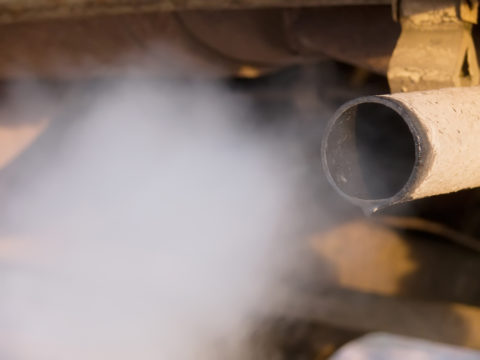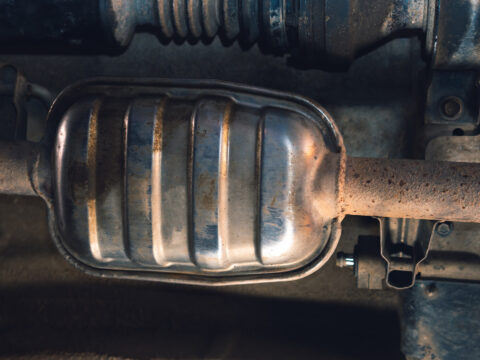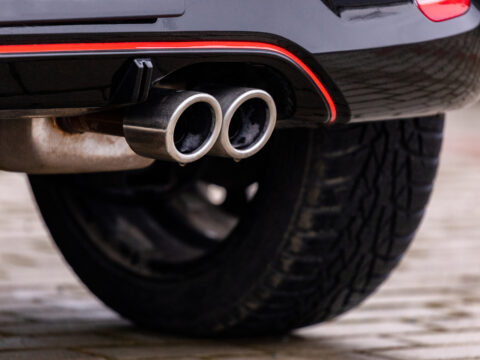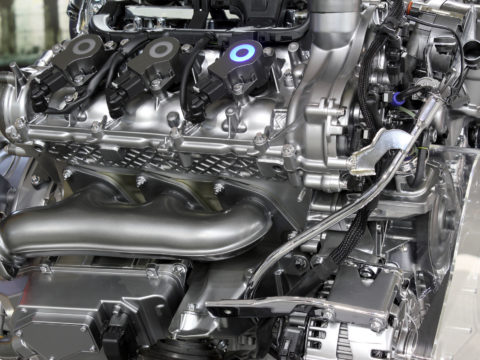Catalytic converters take a lot of abuse, mainly because as part of your exhaust, they work in one of the hottest parts of your car: the engine. However, your catalytic converter can fail for various reasons, including age, rust, or general engine wear and tear. You might also be surprised to learn that catalytic converter theft is a common problem.
So, you might be wondering whether you can operate your vehicle without a catalytic converter.

Contents
Can You Drive a Car Without a Catalytic Converter?
Fortunately, if your catalytic converter has broken or been stolen, you can drive without it. However, just because you can drive without a catalytic converter doesn’t mean you should.
Before 1975, catalytic converters weren’t a part of a standard car exhaust. The fact that there are so many classic and antique cars still on the road is a testament to the fact that vehicles can function perfectly fine without them.
That said, there are downsides to driving without a catalytic converter. Before we get into that, though, let’s cover the basics.
What Does a Catalytic Converter Do?
In 1975, the United States Environmental Protection Agency instituted stricter emissions control requirements for cars. In response to these requirements, automobile manufacturers started including catalytic converters in their vehicles’ exhaust systems as a way to control emissions.
Essentially, your catalytic converter works hard to minimize pollutants in your exhaust, which is better for the environment.
When your engine burns fuel and oil, it creates toxic fumes that pollute the air and environment. A catalytic converter is an emission-control device that takes those pollutants and converts them into less poisonous fumes that aren’t as damaging.
There are two types of catalytic converters. Two-way converters combine oxygen to convert carbon monoxide and unburnt hydrocarbons into carbon dioxide and water. Three-way converters, which have largely replaced two-ways, also reduce the emission of nitrogen oxides.
Is It Illegal to Drive Without a Catalytic Converter in the US?
It’s illegal in every state to remove the catalytic converter from your car, even if your state doesn’t test for emissions during an inspection. Removing the catalytic converter equates to disabling your emissions system, which is required by law to be fully functioning. If you’re caught driving without a catalytic converter, you could face fines of up to $10,000.
However, the one caveat to that law is if your car was produced before the Clean Air Act. Older vehicles didn’t have catalytic converters, so you won’t get fined if your classic car doesn’t have one.
Why Is It Prohibited to Drive a Car Without a Catalytic Converter?
There are four main reasons why it’s prohibited to drive your car without a catalytic converter, each of which has to do with how your vehicle will affect the environment and people around you.
You’re Disabling the Emissions System
By law, your car’s emissions system needs to meet specific standards to be considered road legal. These standards ensure your car isn’t emitting dangerous chemicals into the air.
You’re Polluting the Air
When your car lets out exhaust fumes, most of that smoke goes into the air. Those pollutants can be harmful to people and animals nearby who have to breathe that in. In addition, air pollution is the leading cause of acid rain.
You’re Polluting the Groundwater
As the pollution from your car rises into the atmosphere, it mixes with condensation in the air and creates acid rain. When this rain comes back to the ground, it seeps into the Earth and contaminates the groundwater.
You Could Violate a Noise Ordinance
Your catalytic converter is part of your exhaust system and is located between your exhaust manifold and the muffler. If you remove it, you’re removing part of your exhaust system, which can cause your car to run much louder than it would otherwise. Depending on where you live, the increased volume could cause you to violate a noise ordinance.
What Happens if You Drive Without a Catalytic Converter?
There are several consequences to driving without a catalytic converter. Some are annoyances, while others involve the law.
Check Engine Light Appears
When your car’s computer detects a problem with your catalytic converter or oxygen sensors, the check engine light will turn on. If you’ve removed the converter intentionally, you’ll know right away why the light is on. However, this will prevent you from knowing if another engine issue arises because your light will already be on.
Causes Pollution to the Environment
Removing your converter is very damaging to the environment. It pollutes the air and groundwater around you, the latter of which is pretty significant if you live in an area where residents receive well water.
It Is Illegal
The legal troubles that will result from removing your converter likely won’t be worth the hassle. You’ll have fines, court costs, and lawyer fees if you want to fight the charge. In addition to a fine that could run you up to $10,000, you’ll also need to replace the converter.
Costly Repair
A catalytic converter isn’t a cheap repair by any means. In fact, it could cost you upwards of $3,000 to replace. If you have an older car, the cost of a converter could easily be higher than the value of your vehicle.
You’ll Fail Emissions
Most states require an emissions test each time your car is due for an inspection. If your vehicle fails inspection, you’ll have to fix the problem before your car passes. And, if you opt to not replace your converter and your inspection expires, you could receive traffic tickets, adding to your potential converter fines and repair costs.
Can You Safely Drive Without a Catalytic Converter?
Removing the catalytic converter won’t affect the safety of your vehicle. However, if your catalytic converter is failing due to a clog or because it’s degrading internally, it can be dangerous to drive with it. If you haven’t intentionally altered the converter, but you think it’s damaged, take it to a mechanic for a repair.
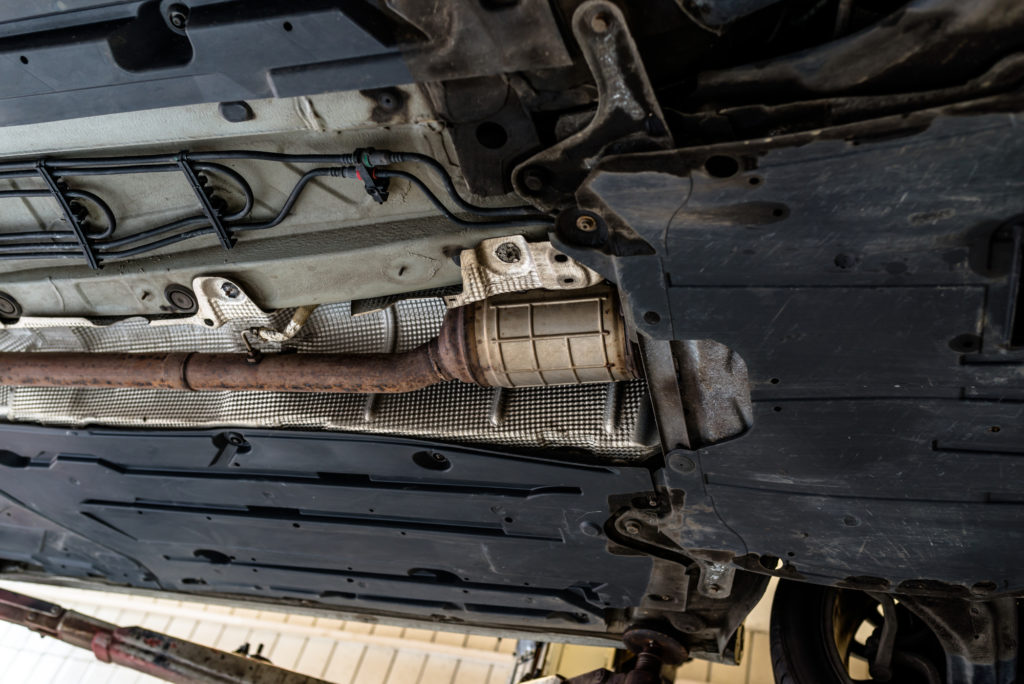
How Long Can You Drive Without a Catalytic Converter?
Since people remove catalytic converters all the time, you can essentially drive indefinitely without one. However, if the converter was stolen, you should contact your insurance company immediately because your policy might cover the cost of a new one.
Does Removing the Catalytic Converter Affect the Engine?
The catalytic converter puts strain on your engine, which causes a decrease in engine performance and gas mileage. Removing the converter can actually increase your horsepower and fuel economy, which are the main reasons people tend to remove them.
Why Do Catalytic Converters Get Stolen?
Thieves often target cars with catalytic converters because converters contain precious metals that can be sold for scrap. Rhodium, palladium, and platinum are all very valuable. A thief can sell a stolen converter for anywhere from $100-$500.
How Much Does It Cost to Fix a Catalytic Converter?
A catalytic converter replacement can run you anywhere from $950-$3,000, depending on your vehicle’s make, model, and year. This includes the cost of parts and labor.
Where to Buy a Catalytic Converter
You can purchase a catalytic converter at most auto parts stores or online retailers. Or, if you want to try to find one a bit cheaper than brand new, you could check a salvage yard. If you’re interested in some of the best brands, you can look into any of these.
Catco Universal Catalytic Converter 608216
Walker Exhaust CalCab Carb 80708
Walker Exhaust Universal 15038
Magnaflow Universal Catalytic Converter
Autosavr88 Catalytic ATCC0016 Converter
Conclusion
The catalytic converter is an integral part of your exhaust that keeps your car road legal and helps prevent excessive pollution into the air. Although you can easily operate your car without one, it’s ill-advised to do so because you’re both harming the environment and breaking the law. If you’ve been considering removing your converter, consider the consequences before you do.

